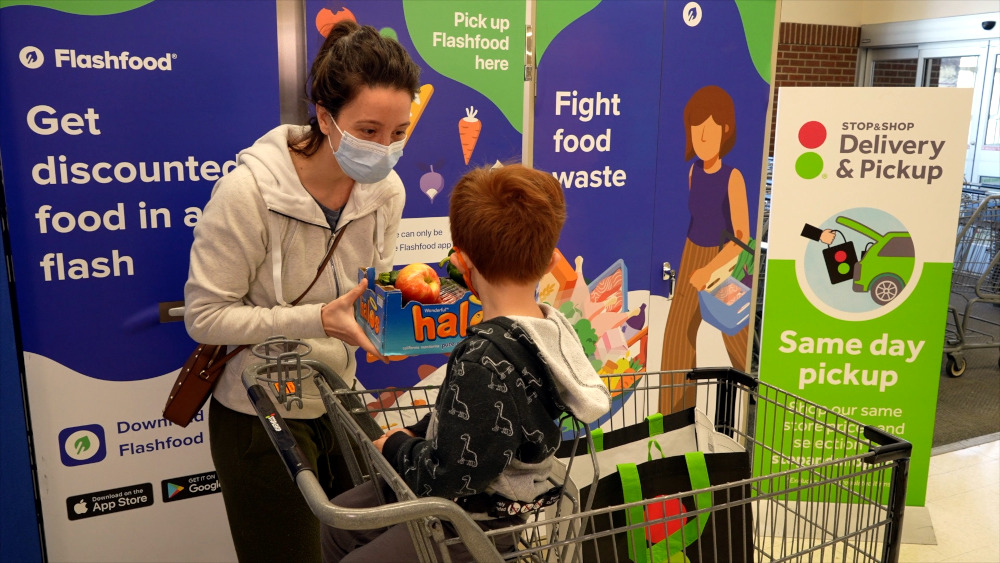Food waste is a well-documented problem around the world, but the figures in the
US alone are truly staggering. According to Feeding
America, 38 percent
of all food goes unsold or uneaten — translating to 149 billion meals heading to
the landfill each year. The USDA notes that an estimated 31 percent of that
annual food loss is at the retail and
consumer levels.
Like many other social and climate issues, the problem with food waste is that
there isn’t a silver-bullet solution to reduce it. Food waste happens at every
link of the food value chain —
farm,
manufacturer,
restaurant,
consumer,
and especially at the local grocery
store.
A number of platforms, with varying degrees of success, are attempting to divert
some of the many tons of still-perfectly-good food deemed unsellable from the
broader distribution system to willing consumers. Toronto-based
Flashfood cuts out the need for logistics and gets
near-expiration
food
from the grocery shelf right to shoppers in store.
“We’re giving our partners an opportunity to reduce food waste, and it’s
economically beneficial for our communities,” Flashfood founder & CEO Josh
Domingues told Sustainable
Brands® (SB).
While platforms such as Imperfect Foods and
Misfits Market redirect unsellable or unwanted
food from a wholesaler, farm or warehouse to consumers, Flashfood allows grocers
to redirect food straight from the shelves. Grocers upload what’s available into
the Flashfood app and shoppers can
choose from the options — much like standard online grocery shopping — and
shoppers can then pick up these items from designated Flashfood areas in the
store. This offers an advantage for both sides of the partnership since there’s
almost no additional cost or logistics in moving near-expiration items from the
shelf. According to Domingues, Flashfood only makes money when the grocers sell
products.
“It’s often difficult to move fresh, healthy and high-quality food (from
distribution to consumer), and our shopper base has shared that they’re
pleasantly surprised with the quality of food making its way through Flashfood,”
he says.
A growing partner network
 Mother and food blogger Stella Scaramangos collects a Flashfood order from her local Stop & Shop | Image courtesy of Flashfood
Mother and food blogger Stella Scaramangos collects a Flashfood order from her local Stop & Shop | Image courtesy of Flashfood
As of December, Flashfood is in more than 2,000 stores across the US and
Canada. These include 700 stores under the Loblaws
banner in Canada, and 75 percent of Stop & Shop’s
400-store footprint across the northeastern United States.
Stop & Shop began partnering with Flashfood in 2021; and it’s now operating in
stores in all five states where it has outposts: Connecticut,
Massachusetts, New Jersey, New York and Rhode Island. According
to the company’s corporate communications manager, Caroline
Medeiros, the partnership has
saved one million pounds of food from the landfill and saved shoppers more than
$2 million on groceries.
“It’s quite astounding to see these numbers,” she told SB. “We would call this a
success, and consider Flashfood a key piece of our health and sustainability
work.”
While Flashfood is not the only conservation and waste-diversion lever the chain
is using, Medeiros says it’s an important way that Stop & Shop can find new
homes for fresh produce and dairy without having to leave the store. Flashfood
sells produce in 5- to 15-lb. boxes for $5.00 (as directed by store
availability); and she notes that this offering is the top-selling item. Other
popular items include Italian sausage, chicken pie, organic grass-fed ground
beef, chicken tenders and eggs. Flashfood also accepts SNAP EBT (electronic food
stamps) in certain states, although Stop & Shop does not currently accept them
as part of the partnership.
According to Domingues, Flashfood added 400 new partners in 2023, and has
aggressive growth plans for 2024. He said the platform will launch in more
states and pilot an e-commerce solution that would bring these near-expiration
groceries to customers’ doors, although he declined to share specifics.
Get the latest insights, trends, and innovations to help position yourself at the forefront of sustainable business leadership—delivered straight to your inbox.
Geoff is a freelance journalist and copywriter focused on making the world a better place through compelling copy. He covers everything from apparel to travel while helping brands worldwide craft their messaging. In addition to Sustainable Brands, he's currently a contributor at Penta, AskMen.com, Field Mag and many others. You can check out more of his work at geoffnudelman.com.
Published Dec 21, 2023 2pm EST / 11am PST / 7pm GMT / 8pm CET